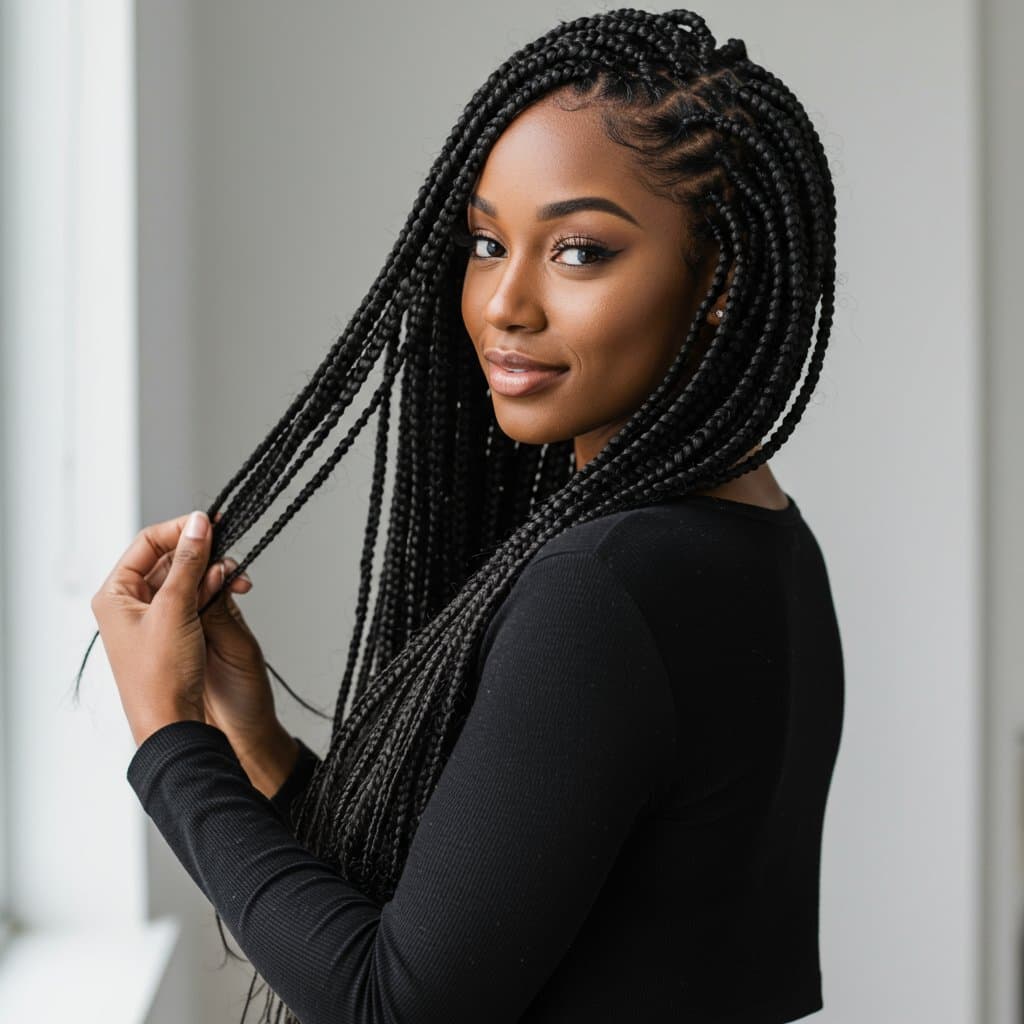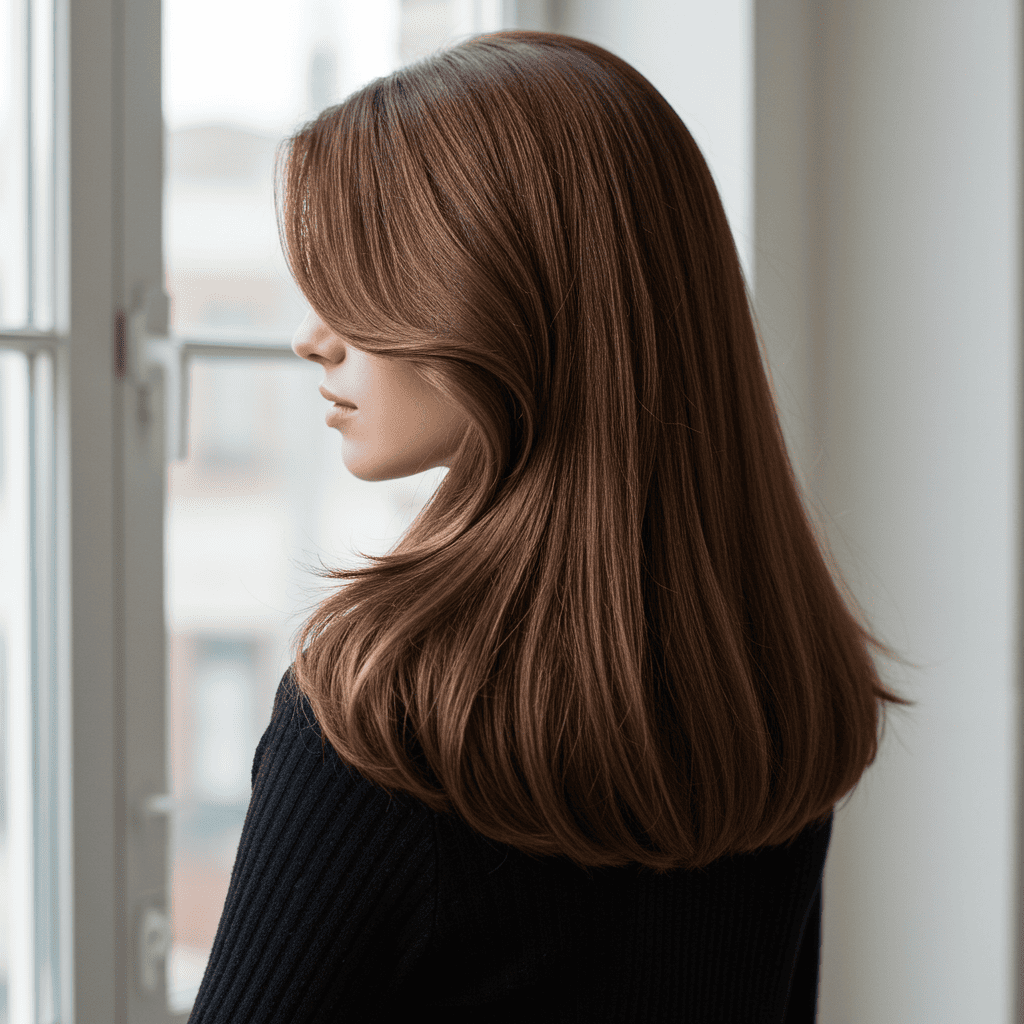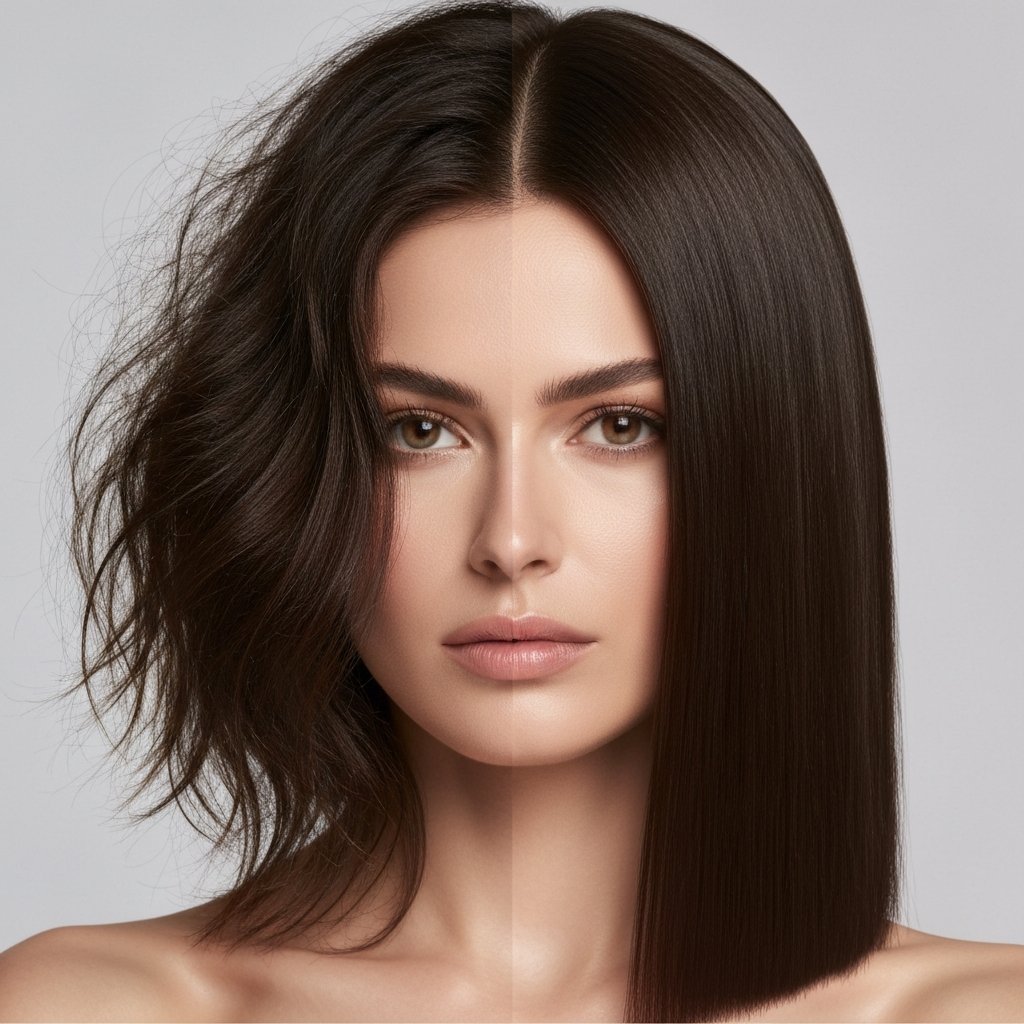
How to Grow Out Bangs Gracefully: Styling Tips for Every Stage | The Ultimate Hair Guide
11 min read

11 min read

10 min read

9 min read

13 min read

9 min read

14 min read
In the world of professional hair care, few things are as coveted as the "glass hair" look—strands that are impossibly smooth, shiny, and immune to the ravages of humidity. For clients struggling with unmanageable frizz, coarse textures, or hair that takes hours to style every morning, professional smoothing services are life-changing. However, a common point of confusion arises when booking an appointment: should you choose a Keratin Treatment or a Brazilian Blowout?

While the terms are often used interchangeably by clients, and sometimes even by less experienced stylists, they are distinct services with different chemical compositions, application processes, and end results. Both treatments aim to smooth the hair cuticle and eliminate frizz, but the journey to get there and the maintenance required afterward vary significantly. Choosing the wrong one might leave you with hair that is too flat, not straight enough, or difficult to maintain based on your lifestyle.
This comprehensive guide dives deep into the science and aesthetics of both treatments. By understanding the nuances of Keratin Treatment vs. Brazilian Blowout, you can make an informed decision that aligns with your hair type, your styling routine, and your long-term hair health goals.
To understand the differences, we must first define what these treatments actually are. It is important to note that "Brazilian Blowout" is actually a specific brand name of a liquid keratin formula, whereas "Keratin Treatment" is a broad umbrella term for hair smoothing therapies.

These treatments work by filling in those porous gaps with protein. The formula is applied to the hair and then sealed in with high heat from a flat iron. The result is hair that is smoother, often straighter, and significantly stronger. It is essentially a deep conditioning treatment that is semi-permanent.
This "super-seal" creates a hydrophobic barrier that repels humidity and creates an instant mirror-like shine. It is generally considered lighter on the hair than traditional keratin, allowing for more volume retention while still aggressively combating frizz.
One of the most significant differences between the two services is the time spent in the salon and, more importantly, what you can do immediately after leaving the chair.

The Downtime Factor: This is the deal-breaker for many. Traditional keratin treatments often come with a strict 72-hour waiting period. During these three days, you cannot wash your hair, get it wet, tuck it behind your ears, or put it in a ponytail. Doing so can leave permanent dents in the hair or strip the treatment before it has fully set. While newer formulas are reducing this time, the "72-hour rule" remains standard for the most potent straightening keratins.
Zero Downtime: When you leave the salon after a Brazilian Blowout, your treatment is complete. You can immediately wash your hair, exercise, put it in a ponytail, or use clips without fear of ruining the results. For clients with active lifestyles or those who cannot commit to three days of unwashed hair, this is a massive advantage.
While both treatments fight frizz, the impact on your natural curl pattern varies.

This is the ideal choice for clients who want to reduce the time they spend flat ironing their hair daily. The hair feels denser and repaired, but it may lack body initially.
With a Brazilian Blowout, the hair feels silky and has incredible shine, but it doesn't feel as "weighted down" as it might with a heavy keratin pack. It is essentially a smoothing service rather than a straightening service.
How long will your investment last? This depends heavily on your home care routine and the treatment chosen.

Maintenance for Both: Regardless of which you choose, the golden rule of maintenance is the same: Sulfate-Free Shampoo. Sulfates (foaming agents found in many drugstore shampoos) act as strippers that will dissolve the keratin or polymer coating rapidly. Salt water and chlorine are also enemies of these treatments. If you plan on swimming, you must protect your hair with a leave-in conditioner or a swim cap.
No discussion about smoothing treatments is complete without addressing the chemical aspect.

Originally, both treatments relied heavily on formaldehyde (or methylene glycol) to bond the proteins to the hair. When heated, these chemicals release gas. Over the years, regulations have tightened, and formulations have evolved.
It is vital to have these treatments performed in a well-ventilated salon by certified professionals who understand how to manage chemical vapors safely. Pregnant women or those with respiratory sensitivities should always consult a physician and their stylist before undergoing either procedure.
Price is often a deciding factor, though the gap between the two has narrowed.

To simplify the decision, match your needs to the treatment attributes below:

Once you have invested in smooth hair, protect it.
Q: Will these treatments damage my hair? A: When performed correctly by a certified professional, they actually improve hair condition by sealing the cuticle. However, excessive heat during the flat-ironing phase can cause damage, which is why seeing an experienced stylist is crucial.
Q: Can I do this on colored or highlighted hair? A: Yes! Both treatments work exceptionally well on chemically treated hair. In fact, porous, colored hair absorbs the treatment better.
Q: Will my hair be completely straight after washing? A: Not necessarily. These are "smoothing" treatments, not "straighteners" like Japanese thermal reconditioning. You will still likely need to blow-dry your hair to activate the smoothness, but the drying time will be cut in half, and you likely won't need a flat iron.
Q: Can African American hair benefit from these treatments? A: Absolutely. Both treatments are excellent for transitioning hair or for managing natural textures without permanent chemical relaxing. They allow for versatility between wearing hair natural and silk-pressed.
Q: How often should I get it done? A: Most clients book appointments every 12 to 16 weeks. Doing it too frequently can lead to protein buildup, which can make hair brittle.
The battle between Keratin Treatment and Brazilian Blowout doesn't have a single winner—it comes down to your specific hair type and lifestyle needs. If you seek deep repair and are willing to wait for results, traditional Keratin is the gold standard. If you need flexibility, volume retention, and instant gratification, the Brazilian Blowout is the modern champion.
Consulting with a professional stylist is the best way to assess your hair's health and determine which route will give you the glossy, manageable mane of your dreams. Say goodbye to humidity panic and hello to effortless hair days.

11 min read

10 min read

9 min read